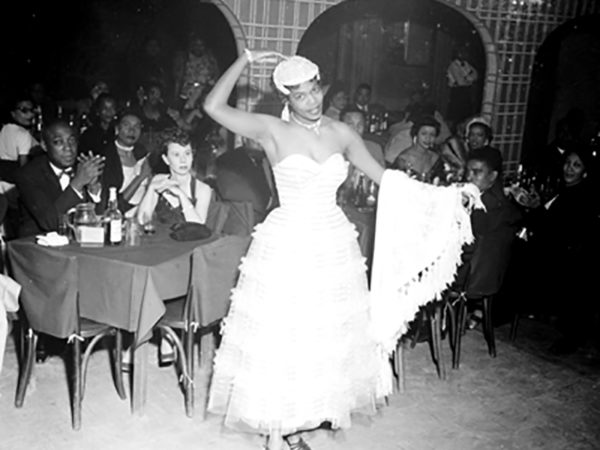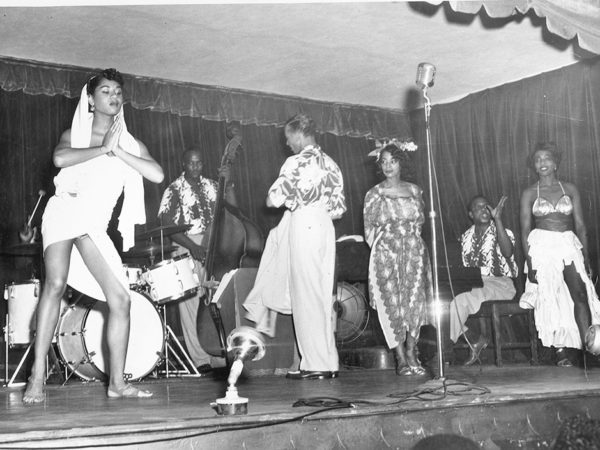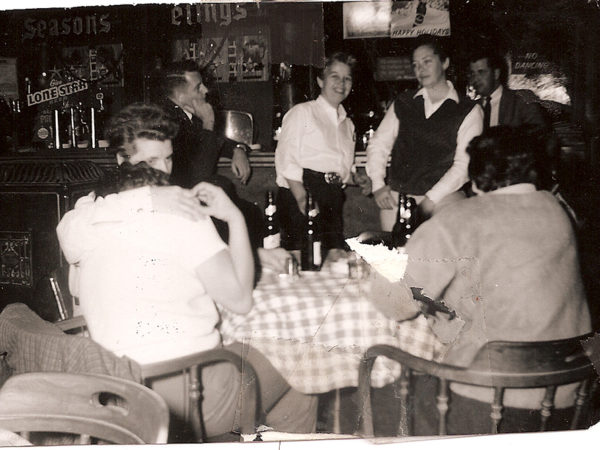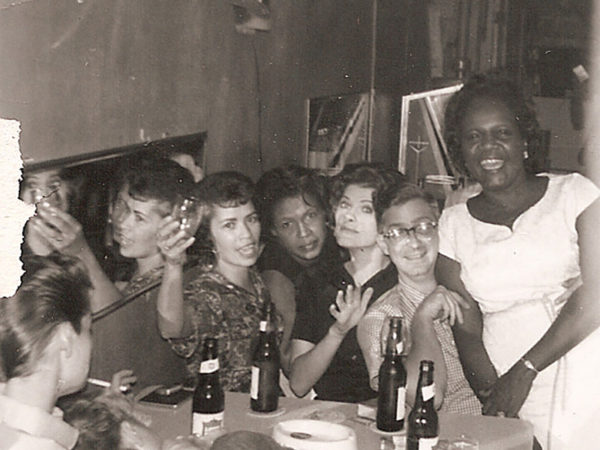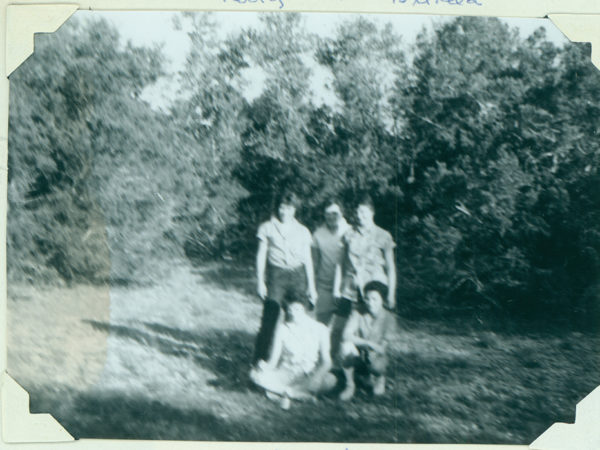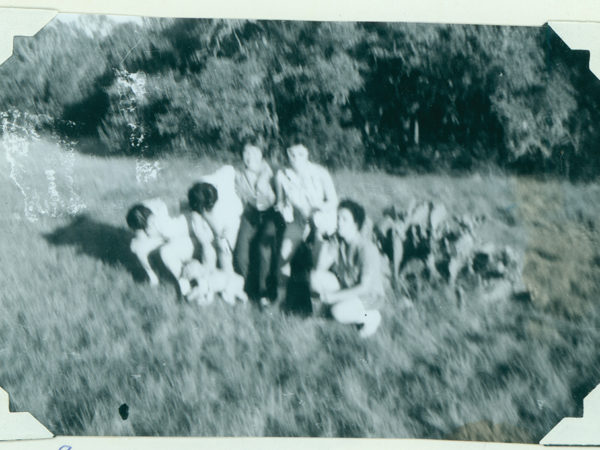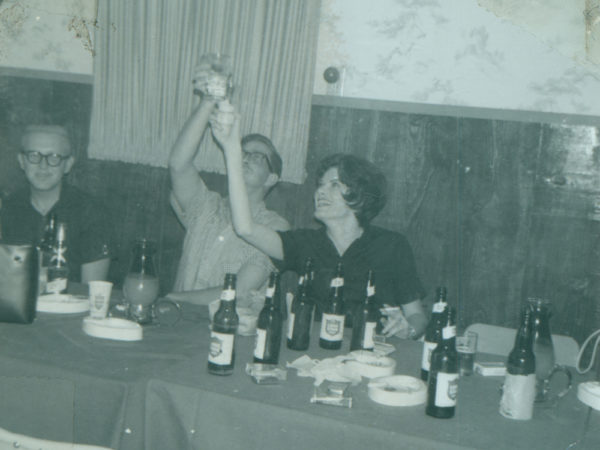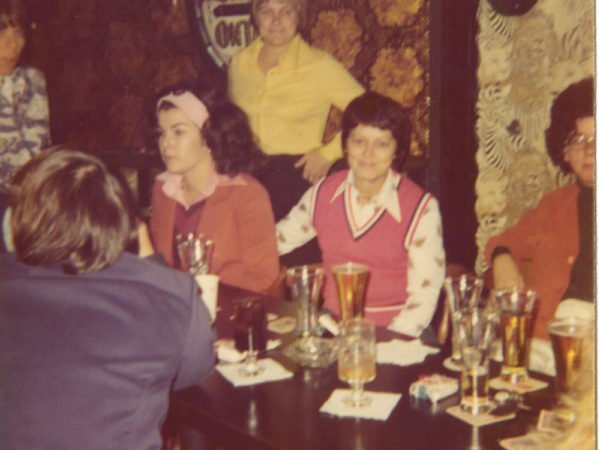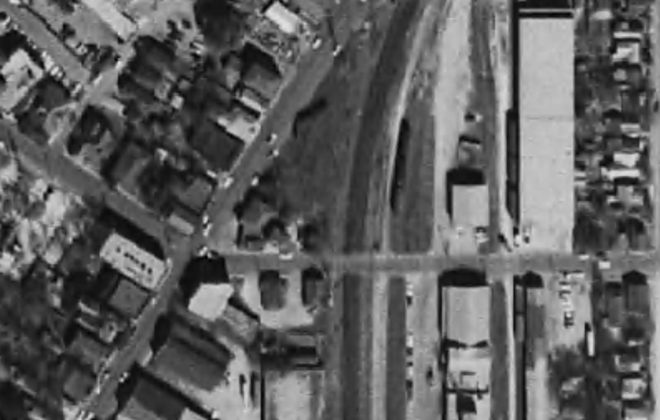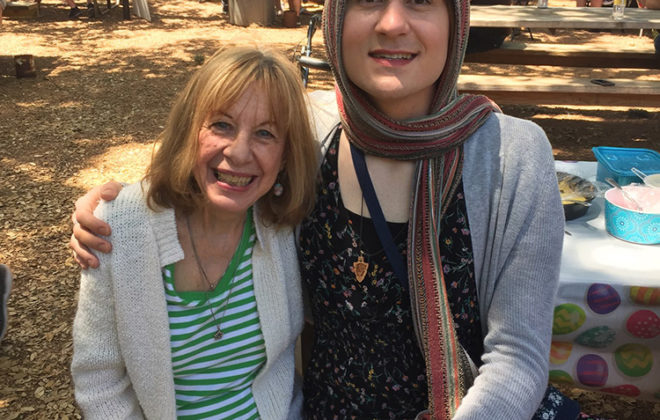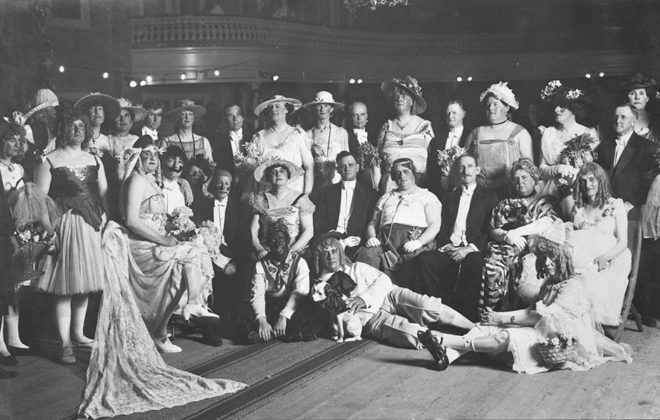Derelict Spaces and Country Places: The Emergence of San Antonio’s Queer Community, 1940s-1970s
Disclaimer:
by Melissa Gohlke
As we explore contemporary notions of gender, identity, and appearance, we can look to the past to ascertain how our present-day interpretations are grounded in the evolution of queer communities decades ago. During the 1940s through the 1970s, lesbians, gays, and trans San Antonians came together in peripheral spaces peppered throughout the city and its surrounds. Within these spaces, queers explored homosexual identities, embraced gender fluidity, experimented with transgressive appearance, and ultimately, laid the foundation for an emerging queer community.
Early vestiges of San Antonio’s queer community emerged during the 1940s as the city expanded to accommodate an influx of military personnel. Gay men and women joined the services in great numbers and many came to San Antonio for training. Historian Alan Bérubé contends that, “when they [queers] could get away from military bases, they discovered and contributed to a rich gay nightlife—parties, bars, and nightclubs—that flourished in war boom cities.”[1] A thriving night scene existed in San Antonio wherein gay men and women found niches that attracted a diverse clientele. The Life Saver Grill and Keyhole Club, both on the city’s east side pulsed with jazz, racy floor shows, and a racially mixed clientele. Within such spaces, queer men and women found community, if only temporarily.[2]
Sites of queer coalescence provided a respite from the rigors of military training. However, such spaces were often under surveillance by military police as federal legislation, entitled the MayAct, moved to regulate activities such as prostitution and homosexuality. The Life Saver Grill and other clubs around the city came under scrutiny and landed on the off-limits list, a mechanism designed to discourage GIs and WACs from patronizing establishments deemed a threat to morality and physical health. “Venereal contacts, bawdy houses, and morals,” coded language on the lists, identified hotbeds of homosexuality which were out of bounds. Posted in barracks, off-limits lists also provided a directory of where to go if you were a gay or lesbian heading out for a night on the town. Ironically, the military facilitated the very behaviors they sought to stamp out. [3]
Military policing of queer space continued even after the war ended and the importance of San Antonio as a training hub solidified. Peripheral spaces removed from the city’s downtown core, somewhat insulated queers from military incursions and enabled them to build the tentative bonds of community. However, these spaces did not provide total immunity from law enforcement infiltrations.
The Acme bar situated just north of downtown San Antonio on Austin Street and the Top Hat located on the east side across from the city cemeteries, welcomed a queer clientele. Out of mainstream city life, these spaces served as a haven for those who shared same-sex affinities. Comradery and conviviality were freely exchanged within these cramped quarters and lasting bonds formed. Although the bars were off the beaten path, some patrons took care to hide their identities as incursions by military and local police were still a periodic occurrence and exposure as a homosexual carried serious consequences such as dishonorable discharge for military personnel, estrangement from family, and loss of employment.[4]
Queers wishing to escape the constraints and controls of the city, fled to venues far from San Antonio’s core. For lesbians, the refuge of choice was Kline’s located miles out of town on Fredericksburg Road. Kline’s provided a rural retreat for gay women where frolicking in the fields provided a much-needed reprieve from the concrete confines of city life. In other rural getaways, more was on the menu than lush landscapes. Paul’s Grove near Helotes, most always referred to as the Country, was a popular sanctuary for queer San Antonians. If a friend said they were going to the country for the weekend, you knew Paul’s Grove was their destination.[5]
Same-sex dancing underpinned much of the Country’s popularity. Any form of intimate gestures, especially same-sex dancing, was expressly forbidden in city clubs. If the police got wind of two men or women dancing together, a raid would surely ensue. The Country, isolated as it was, provided an environment where intimacy flourished. This is not to say the police were unaware of the goings on within the venue. Upon occasion they showed up, but the owners devised a strategy to thwart the efforts of law enforcement. Alerted to the arrival of police or MPs via a window strategically placed in the front door, the Country’s proprietors activated a red light over the bar, a signal to patrons that a raid was imminent. Thus alerted, customers scrambled to find a dance partner of the opposite sex.
A swimming pool and softball field rounded out activities at the Country and provided recreation and relaxation for lesbian moms and their children. Many spent entire weekends at the retreat which served as a comfortable and inconspicuous microcosm of queer life. Whenthe Country closed in 1972 after a fire, many mourned the loss of this important chapter of their lives. These days, when individuals speak of the Country, they do so with misty eyes and nostalgic hearts.
The Country put on drag shows occasionally but dancing not drag is what packed in the patrons. Another rural bar far surpassed any other locale when it came to gender bending entertainment. Tucked away in Von Ormy on Poteet Highway, the Ponderosa hosted drag shows that launched the careers of several drag divas. Big hair and glittery gowns were staples of the runway and patrons could not get enough of the over the top productions. Photos of the bar depict adoring faces soaking up the acts of the drag performers. The bar’s patrons represented a diverse array of ethnicities and backgrounds, all gathered together in a space unconstrained by social and sexual norms. John McBurney, who spent many hours at the bar recalls: The Ponderosa created a community where gay men [and lesbians] could spend time together, apart from the straight world.[6]
![Karlos at Ponderosa Karlos with a K performing at the Ponderosa, 1972, photograph from the collection of John McBurney [7]](https://transamerican.mcnayart.org/wp-content/uploads/2019/06/Karlos-at-Ponderosa_cropped-600x450.jpg)
The 1970s ushered in a new era for gays in San Antonio. In the wake of the Stonewall Riots and the dawning of gay liberation, hostile attitudes toward sexual difference softened and queers in the city no longer felt compelled to flee to rural spaces for entertainment and intermingling. Social acceptance dovetailed with changes in the urban landscape that allowed queer business owners the flexibility to secure spaces closer to the city center.
The San Antonio Country opened on St. Mary’s street in 1973, paying homage to the Country located in far flung Helotes. Touted as “. . . a place where anyone can feel comfortable . . . it’s just a bar for people who are liberated enough to accept the fact that different people are off on their own trips.”[8] Gene Elder, manager of the San Antonio Country, summarized the mindset of a decade, “most gay bars at the time were red lights and smoky and dark and secretive and ashamed. We brought it all out and made a modern presentation . . . a welcome change to the consciousness.” [9]
Gay and lesbian bars which anchored queer life in San Antonio proliferated during the 1970s, popping up along main thoroughfares throughout the city. However, such spaces were no longer peripheral to the pulse of city life—they were often located right in the heart of things. This change was emblematic of a transformative time when queer San Antonians established firm roots and no longer exiled to the fringes of society, became an important part of the city’s growing diverse culture.
[1] Alan Bérubé, Coming Out Under Fire: The History of Gay Men and Women in World War Two (New York: Penguin Books, 1991), 7.
[2] I use the terms gay, lesbian, and homosexual interchangeably. I frequently use the word queer as an umbrella term that covers many ways of being within the LGBTQ community. The term queer is used in academic writing and should not be construed as pejorative.
[3] The Life Saver Grill was on an off-limits list found in the vertical files of UTSA Special Collections.
[4] Carolyn Weathers, correspondence and interviews, 2014.
[5] Ibid. Oral histories of community members by Melissa Gohlke conducted in 2010.
[6] Beatrice Roman, “Country days and drag nights on the South Side,” [https://outinsa.com/country-days-and-drag-nights-on-the-south-side/], accessed March 27, 2019.
[7] Author performed due diligence (unsuccessfully) to contact Mr. McBurney regarding use of this image. Photograph is included under Fair Use guidelines and will be removed if requested.
[8] “Former Trinitonian starts S.A. nightspot,” in The Trinitonian, October 26, 1973.
[9] Gene Elder, oral history interview by Melissa Gohlke, January 28, 2011.


